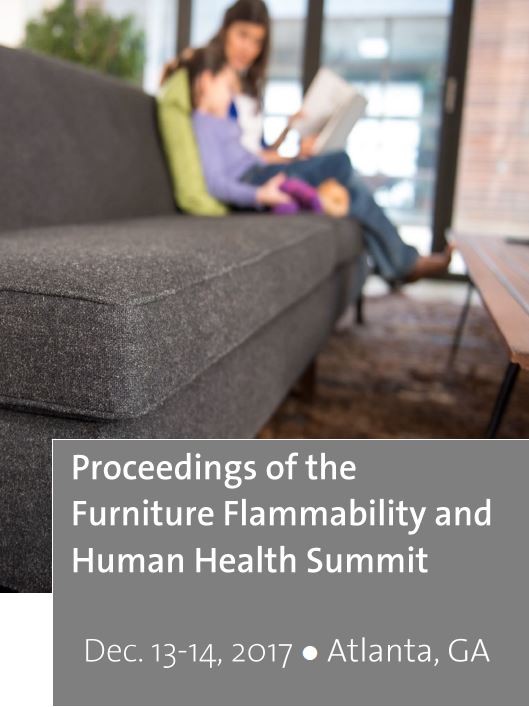
UL (Underwriters Laboratories) has published the proceedings of the third Furniture Flammability and Human Health Summit, organised with Emory University, Atlanta, 13-14 December 2017. This summarises inputs from nearly thirty speakers from research, industry, firefighters and regulators, covering fire statistics, furniture fire testing, smoke toxicity, chemical safety and different approaches for furniture fire safety. Marty Ahrens indicated that the US NFPA’s most recent data shows that although only 2% of reported US fires started in upholstered furniture, these fires caused 18% of civilian fatalities, and one in twelve such fires resulted in a death. Discussion suggested that application of fire test standards is one of the factors contributing to the reduction in fire deaths related to upholstered furniture, and many participants agreed the “urgent need” to have a national furniture fire test standard in the USA, with a “strong recommendation” to develop a test for both open flame smouldering ignition. Smoke toxicity was significantly discussed, underlining fire fighters’ concerns about smoke toxicity and cancer risk, noting the need for more information about emissions of smoke, soot, carbon monoxide, hydrogen cyanide, polycyclic aromatic hydrocarbons and other chemicals. C. Carignan, Michigan State University, presented data suggesting that exposure to certain organophosphorus FRs (1) is statistically correlated to lower human male and female fertility. The overall conclusion was support for further research and testing for furniture fire safety, fire prevention, chemicals safety and smoke toxicity, to develop new solutions for healthier fire safety protection.
(1) TDCIPP = tris(1,3-dichloroisopropyl)phosphate, mono-ITP = monosubstituted isopropylated triaryl phosphate, TPHP = triphenyl phosphate
“Proceedings of the Furniture Flammability and Human Health Summit”, 13-14 December 2017, Atlanta, Georgia. https://ulchemicalsafety.org//wp-content/uploads/2019/02/2017-FF-Summit-Proceedings.pdf